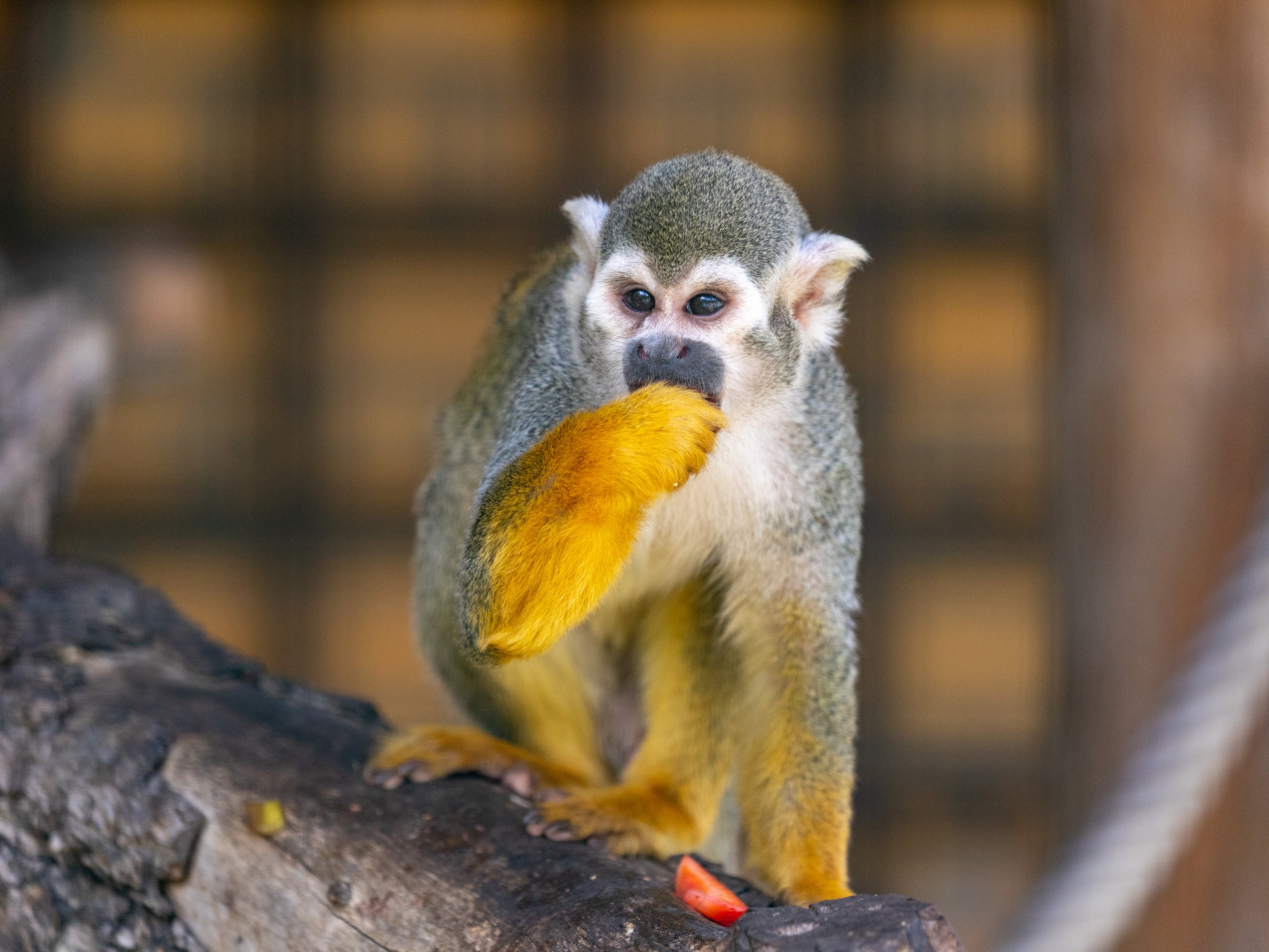
Station 3 Totenkopfaffen
Seinen Namen verdankt der Totenkopfaffe der charakteristischen Gesichtszeichnung mit den weißen Ringen um die Augen, die ihm, oberflächlich betrachtet, tatsächlich das Aussehen eines Totenkopfschädels verleiht. Mit dem rundlichen Kopf, den großen Augen und den runden Backen, wirken die Totenkopfäffchen allerdings auf den Menschen eher anziehend als abschreckend. Durch die Geschichten um Pippi Langstrumpf ist diese Affenart bekannt geworden. War doch der zahme „ Herr Nilsson“ ebenfalls ein Totenkopfaffe. Als Allesfresser sind sie viel damit beschäftigt, Blätter, Früchte so wie Insekten und andere Kleinlebewesen zu suchen. Diese geschickten und geselligen Kletterer leben in den Südamerikanischen Urwäldern in Gruppen zusammen. Um von allen Gruppenmitgliedern erkannt zu werden, reiben sich Totenkopfäffchen ihr Fell mit Urin ein. Ein Geruchsausweis sozusagen. Dies schützt sie leider nicht davor, dass immer wieder Tiere aus der Natur gefangen werden um in Privathaltungen oder im Kochtopf zu landen.
Station 3 Kotul veverovitý
Kotul veverovitý vděčí za své (německé) jméno charakteristickým znakům v obličeji s bílými kruhy kolem očí, které mu na první pohled dodávají vzhled lebky. Díky své zakulacené hlavě, velkým očím a kulatým tvářím jsou však kotulové pro člověka spíše atraktivní než děsivé. Tento druh opice proslavily příběhy o Pipi Dlouhé punčoše. Ochočený „pan Nilsson“ byl také kotul. Jako všežravci jsou velmi zaměstnáni hledáním listů, plodů, hmyzu a dalších drobných živočichů. Tito obratní a společenští lezci žijí společně ve skupinách v jihoamerických džunglích. Aby je všichni členové skupiny poznali, potírají si kotulové srst močí. Takříkajíc čichová identifikační karta. To je však bohužel nechrání před odchytem z volné přírody, aby nakonec skončili v soukromých domech nebo dokonce v hrnci na vaření.
Station 3 Squirrel Monkeys
The squirrel monkey owes its name to the characteristic facial markings with the white rings around the eyes, which, superficially, actually give it the appearance of a skull. With the roundish head, the big eyes and the round cheeks, the squirrel monkeys seem however rather attractive than deterring on humans. This monkey species became known through the stories about Pippi Longstocking. After all, the tame “Mr. Nilsson” was also a squirrel monkey. As omnivores, they are busy looking for leaves, fruits as well as insects and other small creatures. These skilled and gregarious climbers live together in groups in the South American jungles. To be recognised by all group members, squirrel monkeys rub their fur with urine. An olfactory identity card, so to speak. Unfortunately, this does not protect them from the fact that again and again animals are caught from the wild to end up in private homes or in the cooking pot.